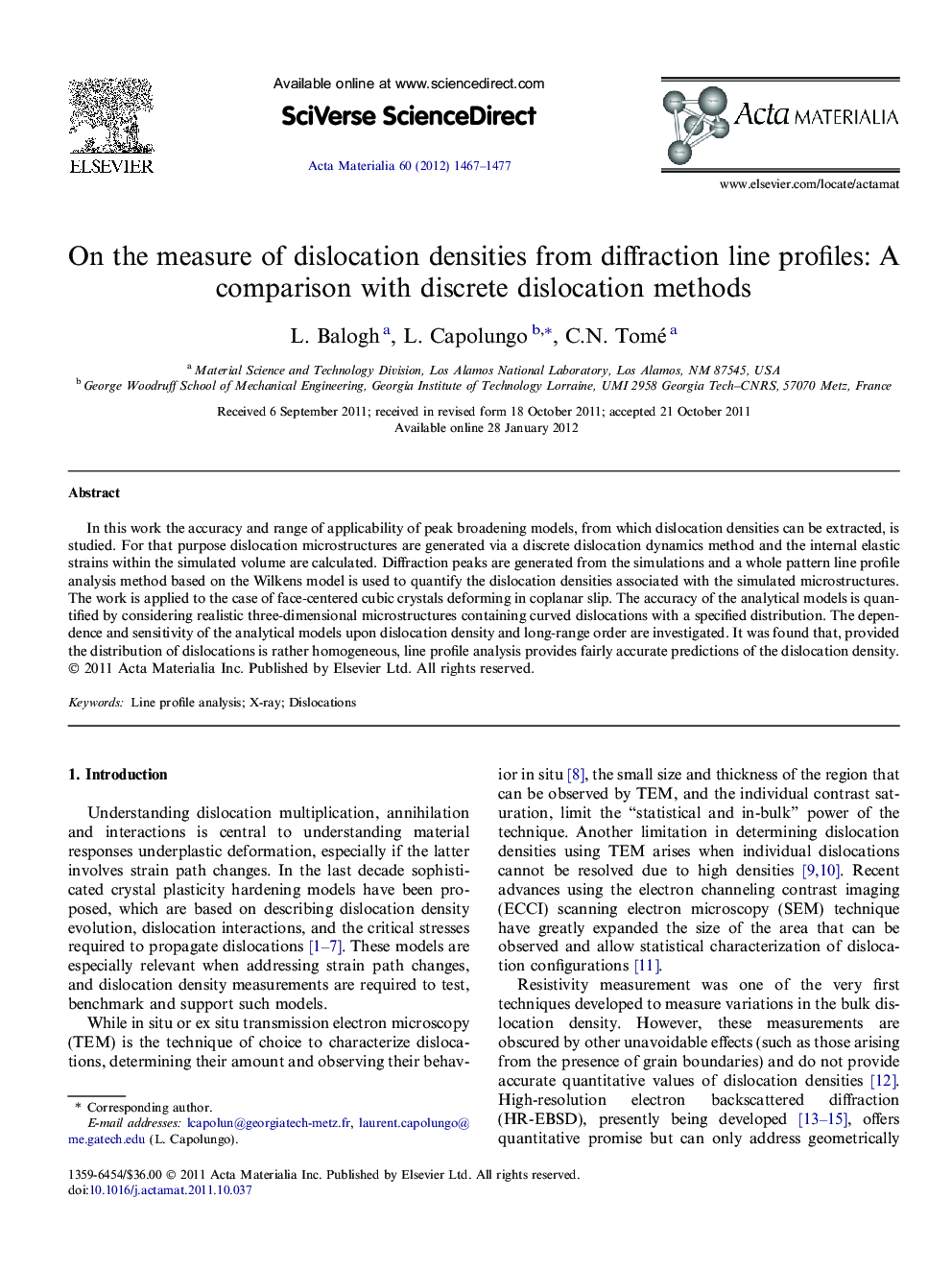| Article ID | Journal | Published Year | Pages | File Type |
|---|---|---|---|---|
| 1446806 | Acta Materialia | 2012 | 11 Pages |
In this work the accuracy and range of applicability of peak broadening models, from which dislocation densities can be extracted, is studied. For that purpose dislocation microstructures are generated via a discrete dislocation dynamics method and the internal elastic strains within the simulated volume are calculated. Diffraction peaks are generated from the simulations and a whole pattern line profile analysis method based on the Wilkens model is used to quantify the dislocation densities associated with the simulated microstructures. The work is applied to the case of face-centered cubic crystals deforming in coplanar slip. The accuracy of the analytical models is quantified by considering realistic three-dimensional microstructures containing curved dislocations with a specified distribution. The dependence and sensitivity of the analytical models upon dislocation density and long-range order are investigated. It was found that, provided the distribution of dislocations is rather homogeneous, line profile analysis provides fairly accurate predictions of the dislocation density.
